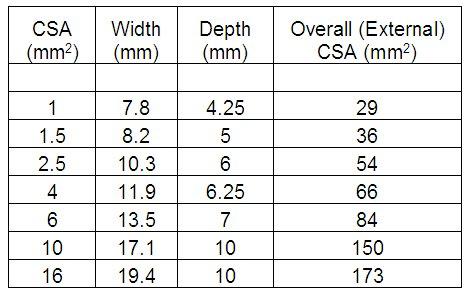Cost surely isn't an issue. The small marginal difference between price of 6mm² and 10mm² cable is surely trivial in relation to the time, effiort, hassle (and potential cost) of having to dig around in the walls within 12 months, isn't it??I take your point. Cost would be one reason, another would be that as I didn't design the installation to start with.If, as seems to be the case, you believe that there is a substantial possibility that you will have a need to upgrade the 6mm² cable within the next 12 months, why on earth don't you put in something bigger than 6mm² now - there's never a problem in having a cable which is over-specified!
Kind Regards, John


